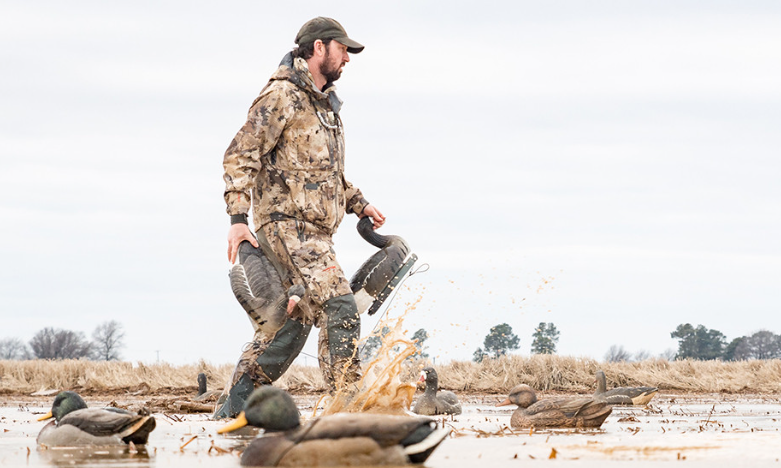The five shot .32-caliber Colt Pocket Pistol Model 1849, is the smallest and lightest at 25 ounces perfect for the youthful novice, who might enjoy the Old West flavor.
Story and Photos by Frank JardimThe first handgun I ever shot was a target .22LR S&W Model 17 revolver with a 6-inch barrel and those hefty checkered target grips. I was a skinny 12-year-old, and the gun was much too big for me. It was only a K-frame, but that thick-walled long barrel got it almost to 40 ounces and it was every bit of 11 inches long.
Though the recoil was negligible, it was a strenuous undertaking for me at that age to just hold it up, and it required both hands just to get a grip on those big stocks. I loved it, but it was hard to shoot well. Today, as a publicly professed grown-up, I find myself in the same position as those seasoned adult shooters who generously cultivated my youthful interests in firearms.
In doing so, I’ve experienced what must surely be the same anxieties they did with me. Even though a youngster may passionately want to shoot a handgun, I ask myself, “Is this kid physically big and strong enough to handle a pistol safely?” Most of what adults would consider medium-sized handguns are simply too big for youngsters with small hands and slim arms.
My solution was to find a handgun that was kid-sized. Those little .22 LR and .25 ACP pocket pistols are actually perfectly scaled for little hands, but I believe they are a poor choice because they require a really tight (vise-like) grip to shoot without jamming, the slides are hard to pull back because of the heavy blow back recoil springs, and the safety discipline of any autoloader requires the additional steps of removing the magazine and checking the chamber.
The aforementioned heavy recoil spring will probably make it impossible for a kid to pull back the slide and check the chamber. I know many full grown women who can’t. Therefore, in my opinion, autoloaders for kids are out.

The current Model 317 has an aluminum frame and weighs less than 12 ounces. It will set you back about $700 new. Used Harrington & Richardson .22LR revolvers still show up, and they can often be had for less than $200 in nice shape. For youthful novices who you suspect might enjoy an Old West historical flavor to their shooting experience (just about all boys), replicas of the Colt’s Patent Firearms black powder, cap-and-ball, pocket revolvers are perfectly proportioned in grip size and weight.
The five shot .32-caliber Colt Pocket Pistol, commonly called the Model 1849, is the smallest and lightest at 9 inches long (with the usual 4-inch barrel) and 25 ounces. There are lighter versions of this pistol, but they sacrifice the integral loading lever to save weight, and that makes them just too awkward to load, even for adults.
This compact and mild recoiling pistol was so popular, Colt sold nearly 336,000 before production ceased in 1873. In my opinion, an even better cap and ball choice is the graceful Colt New Model Police Pocket Pistol of Navy Caliber or Model 1862 Pocket Police.
It is a five-shot .36-caliber, measuring 113/4 inches long (with the usual 61/2-inch barrel) and weighing only 261/2 ounces, 11/2 ounces more than the shorter Model 1849. This pistol resembles a miniature 1860 Army of Civil War fame, except that it also has a fluted cylinder to save weight.
The longer barrel and sight radius make it easier to shoot accurately, but the main advantage is the longer loading lever, of improved creeping design, makes it easier to load than the 1849. Though this pistol can be charged to pack quite a punch, reduced powder charges produce minimal recoil for comfortable shooting.



Franklin ready to
shoot cap and ball.

Dixie Gun Works (DixieGunWorks.com) in Union City, Tennessee, currently has the exceptionally nice Uberti-made (UbertiReplicas.it) 1862 on sale for $325.
In many states, black powder firearms can be shipped directly to the buyer. If you live in one of these, online price-comparison shopping makes good sense. You don’t need a local FFL dealer and you don’t need to pay for a transfer on a pistol you order from out of state. Just find the best deal from a quality maker.
I’ve notice the online competition for new cap-and-ball revolver sales is so fierce, it’s hard to find a genuine bargain on a used pistol at a gun show.
MY NINE-YEAR-OLD SON and I spent a recent morning in the backyard exploring the merits of our Uberti reproduction 1862 Pocket Police. The revolver was beautifully made, with European walnut stocks, a color casehardened steel frame and brass backstrap.
He’s excited to try it, partly because he knows that it’s a man’s pistol, despite its small size. I’ve explained that Colt wanted a powerful handgun in a compact lightweight package for ease of carry and concealment, particularly for city police officers. In addition, the Model 1862 was the last of its kind. It was the final cap-and-ball pistol Colt produced before changing over to the manufacture of cartridge firearms after the Civil War.
Around 47,000 were made by 1872. It was so well balanced and easy to carry, many were used for protection well into the cartridge era and made their way with the wagon trains west to adventure.
A historic firearm, even a historic replica, has a romantic appeal that modern firearms can rarely approach, and I believe that adds to the quality of the shooting experience for youngsters. In the case of this little Colt and my son, there was definitely a Cowboys & Indians thing going on in his head.



From a practical standpoint, firing a cap-and-ball pistol requires the shooter to develop discipline that will help him or her as they mature in the shooting sports. To make the guns shoot, there are, frankly, a lot of steps you need to go through, and in this case, that’s a good thing.
All the effort drives home the point that, in order for the pistol to function reliably and safely, every step must be completed correctly, and every technique executed consistently, while the shooter continuously observes its mechanical state. Because you basically hand-craft every shot, you become inclined to aim and shoot carefully to make each one of them count.

FOR THE UNINITIATED, HERE are the process details, to be executed while always keeping the barrel pointed in a safe direction. After taking the pistol from storage, you need to clear the nipples and chambers of oil that might contaminate the powder or caps before you load for the first time.
A pipe cleaner and cleaning patch works well. You can also fire off a cap from each nipple to burn it out, but this always seemed like a waste of caps to me. In preparation for loading, first position the hammer at half cock so the cylinder can be rotated. (Always check for loads or caps that still in the cylinder. Accidentally loading powder over a full chamber will make a mess.)
Don’t worry about overcharging the pistol. You can’t do that with FFFG black powder because the chamber capacity represents the maximum load. If my son double-charged a chamber, it would have just overflowed. No great danger, only wasted powder. I made him a special reduced charge powder measure with a 9mm cartridge case that threw 13.5 grains. The maximum load for this pistol is 20 grains.
To load the cylinder, charge the first empty chamber with FFFG black powder, drop a ball in the chamber mouth, and seat it firmly over the powder with the loading lever. Properly sized balls (.378 diameter) are slightly oversized, and a thin ring of lead will be shaved from them as they are seated, indicating a good seal.
I like Hornady swaged pure lead round balls because they are perfectly round and can thus be loaded any way. By contrast, cast round balls have a sprue that should always be oriented up during loading.
When all chambers are loaded with powder and ball, the pistol is turned on its left side, pointing downward, and a Remington No. 10 percussion cap gently but firmly seated on each nipple with your fingers. Small fingers are ideally suited for this (I always use my fingers rather than a capper, because I know I can’t accidentally detonate a cap with my thumbnail).
By the way, cap sizes vary from brand to brand and even within the same brand and type. Beware of caps that are too long or tight on the nipple because they often won’t seat fully, which can cause a misfire on the first try as the hammer drives then down.
After capping, Crisco is smeared into the front of each cylinder as extra insurance against the blast from the firing chamber flashing over and igniting the adjoining chambers in a chain fire. I’ve never seen it happen, and it shouldn’t with a properly sized bullet, but why take chances?
The Crisco also lubricates the gun and keeps the fouling soft. Once the revolver is loaded, the hammer should be set on one of the safety pins between chambers until ready to shoot. The firing ritual itself requires the pistol be pointed skyward while cocking to allow the blasted remains of the exploded percussion cap to fall free of the action.
If you don’t do this, they will eventually fall into the hammer channel and cause aggravating misfires, each one requiring a 30-second delay while you wait to determine if the misfire is actually a hang fire. This is where constant observation of the operation of the action pays off.
Paying attention to where those exploded caps are going, and that the unfired caps haven’t fallen off, will insure trouble-free shooting. As with all single-actions, the long hammer fall requires shooter follow through each time the trigger is pulled. Fortunately, this pistol had a simply beautiful, crisp, light trigger.

This story was originally published in AmSJ July, 2017










